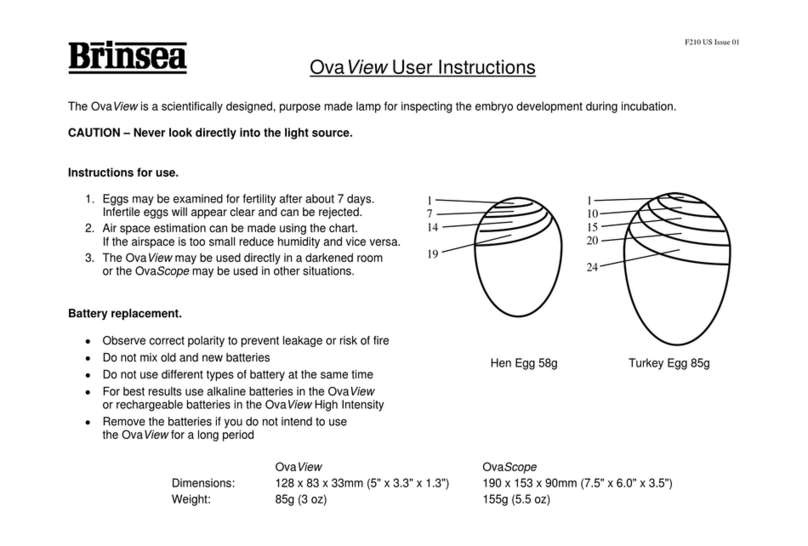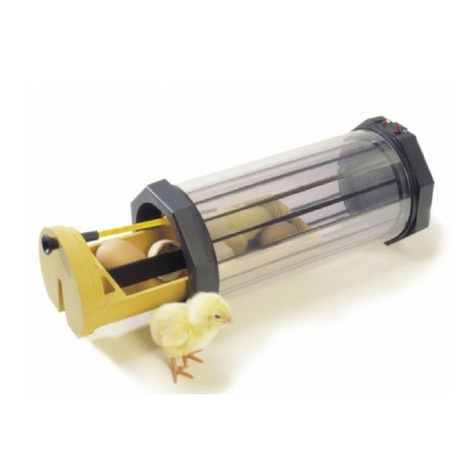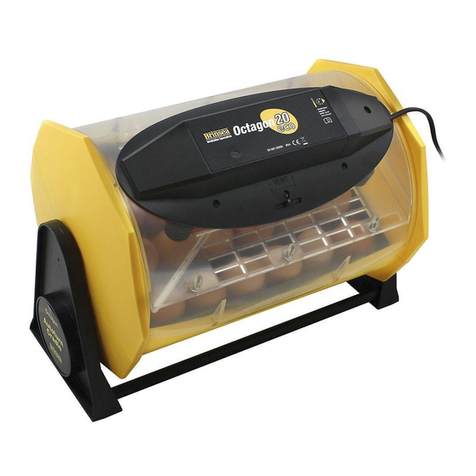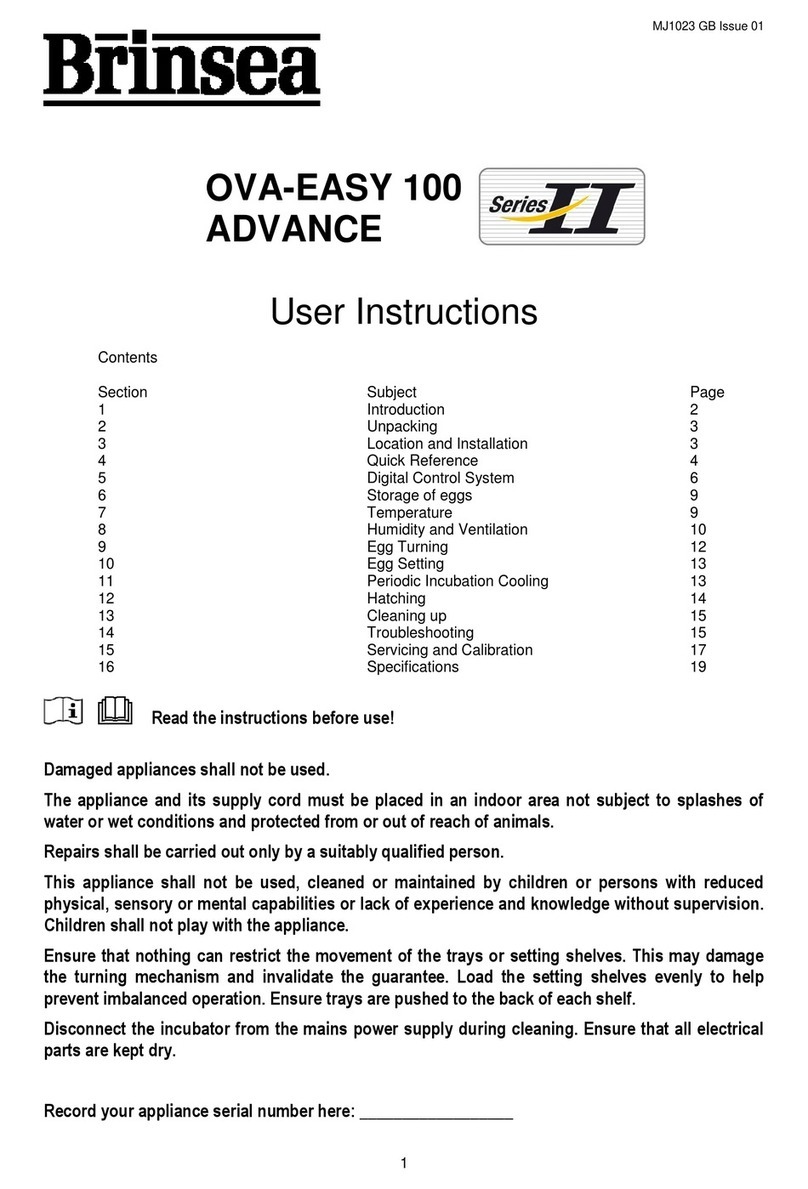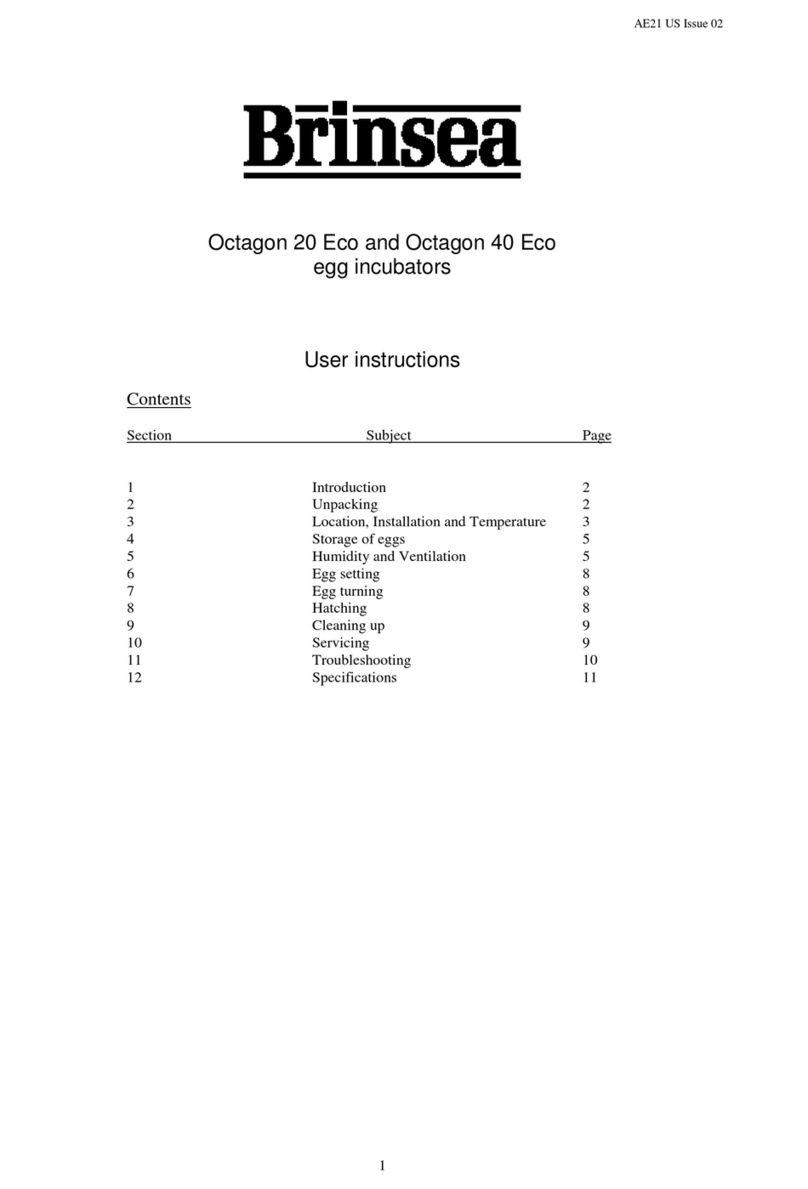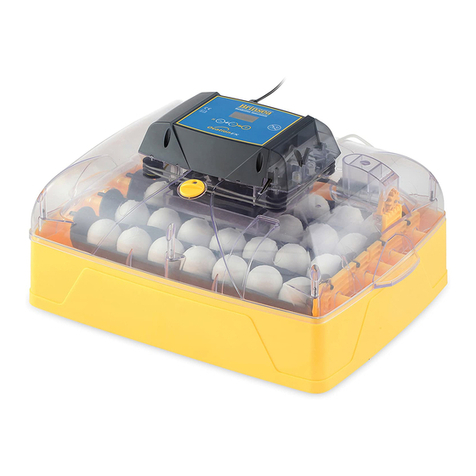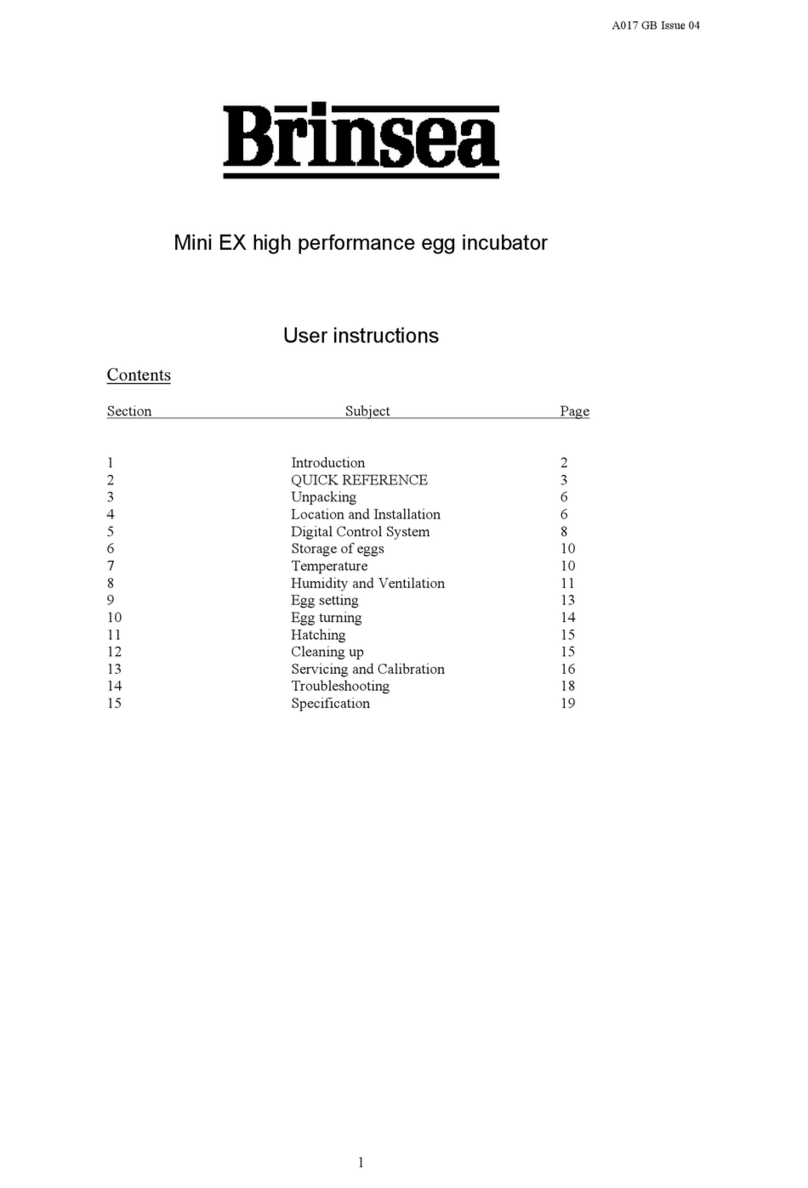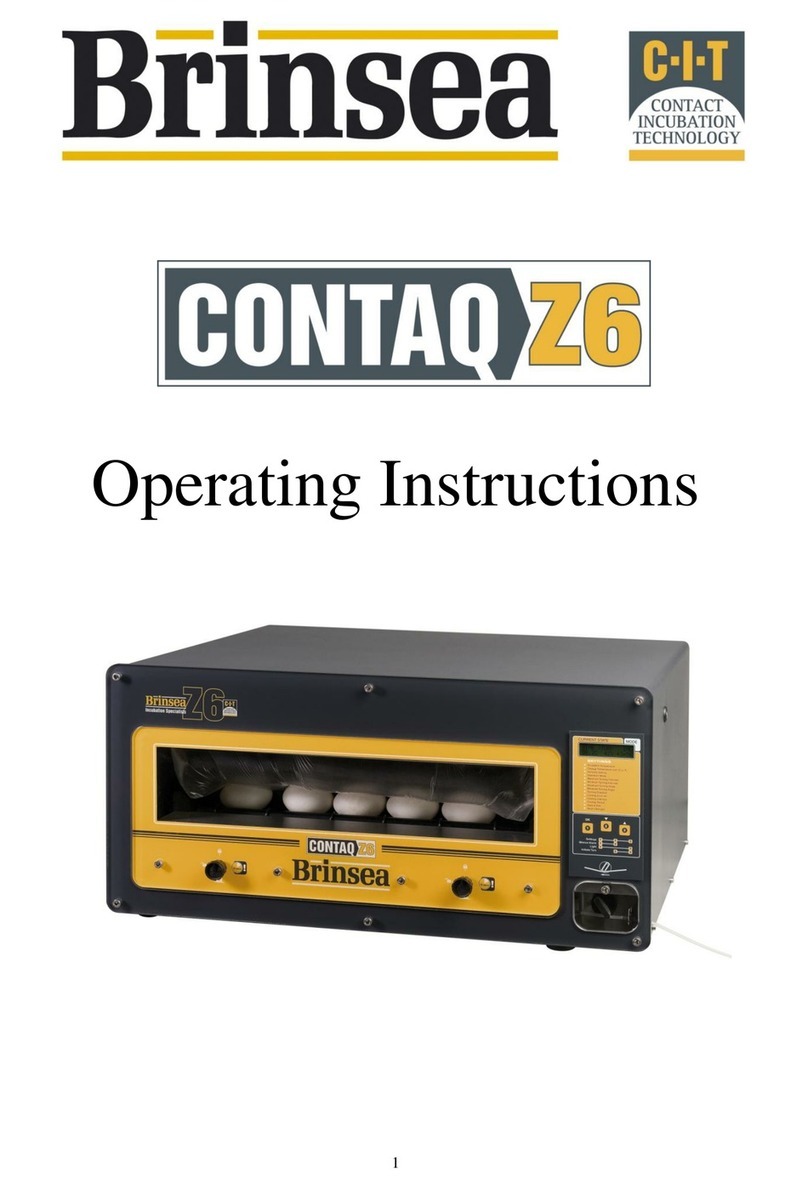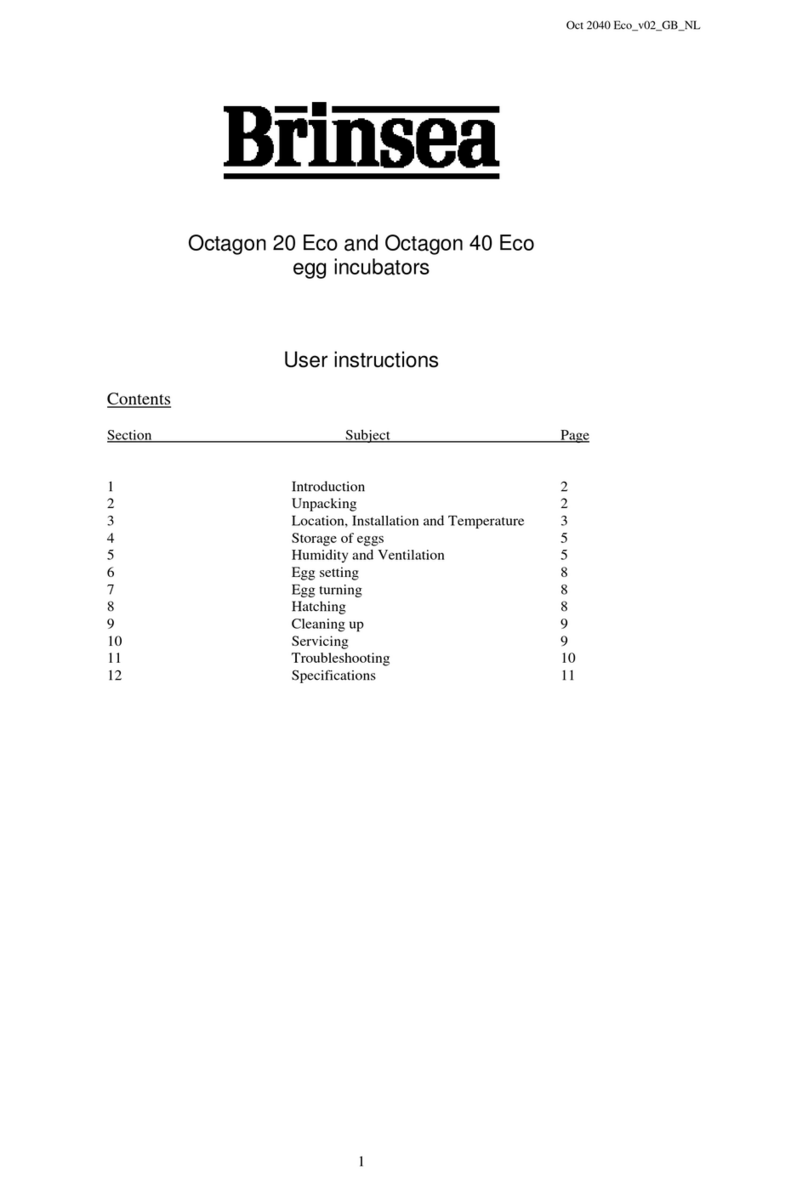A015 GB Issue 05
5
4.6 Recommended temperatures: Typical incubation period:
Hens 37.4 –37.6°C 99.3 –99.6°F 21 days
Pheasant 37.6 –37.8°C 99.6 - 100°F 23-27 days
Quail 37.6 –37.8°C 99.6 - 100°F 16-23 days
Ducks 37.4 –37.6°C 99.3 –99.6°F 28 days
4.7 Developing embryos are fairly tolerant of short term temperature drops and the user need not be
concerned about cooling that occurs when inspecting eggs. Temperatures above ideal can quickly have a
serious detrimental effect on hatch rates and must be avoided.
5 Humidity and Ventilation
Correct humidity levels are important for successful incubation. Short term variations in humidity are not
important. The average humidity over the incubation period needs to be near optimum to achieve the ideal
weight loss. High humidity for the day or two of hatching is also important. Beware chronic, excessive humidity.
For more detailed information download the Brinsea Incubation Handbook free of charge at www.brinsea.co.uk
5.1 As a general guide for poultry/game/waterfowl maintain water in one of the two water pots from the time
eggs are set until 2 days before hatching is due - the depth of water doesn’t matter. If the incubator is full
of parrot (and parrot like species) eggs the incubator may be run without water for some of the early
incubation period.
For all species ensure the water level is above the divider between the two pots for the last two days of
incubation. Higher humidity levels are needed for hatching to prevent membranes drying too quickly. Fit
the water pot guard to prevent chicks drowning.
The above guidelines make no provision for different ambient conditions and are necessarily rather
generalised but they are simple and often effective.
5.2 In all cases the humidity for hatching needs to be high. Because of the short duration involved
water/weight loss will not be significantly affected. High humidity is necessary to prevent membranes
drying and hardening before the hatch fully emerges. Humidity will naturally increase as the first eggs
begin to hatch and internal membranes begin to dry. This effect is in addition to the increased area of
water evaporation from the water pots.
5.3 During hatching the high humidity levels will fall dramatically when the lid is opened and will take some
time to build up. Resist the temptation to lift the lid frequently –leave for at least 6 hours between
inspections.
6 Egg Setting
6.1 The Mini Eco is designed to accommodate eggs of different sizes up to duck eggs. Some experimentation
may be necessary to maximise capacity. Before setting eggs ensure that the incubator has been run for
several hours and has stabilised at the correct temperature.
6.2 Set the eggs at least 2cm in from the edge of the incubator base so that they are clear of the “skirt” of the
lid when it is fitted.
6.3 Once the eggs have been set the temperature must not be adjusted for 24 hours to allow the eggs to warm.
Check the water level every 3 days or so and temperature daily. Candle the eggs after 1/3rd of the
incubation period has elapsed to reject clear, infertile eggs (see section 12).

